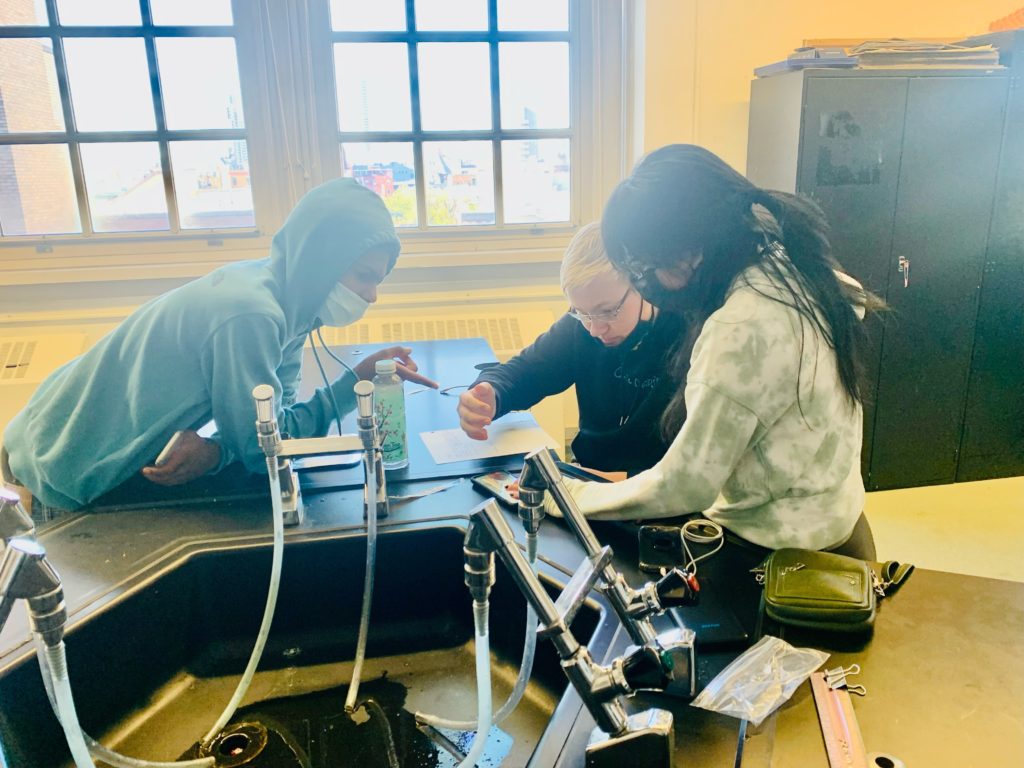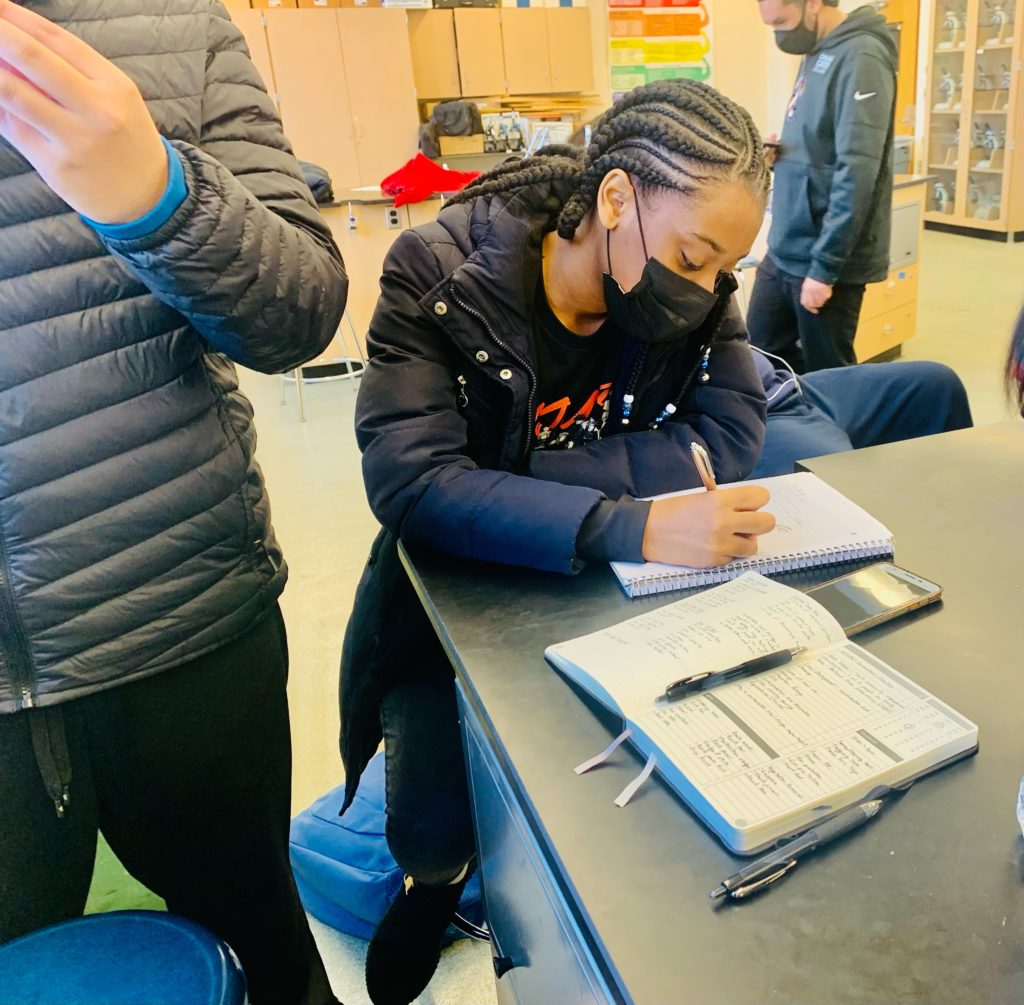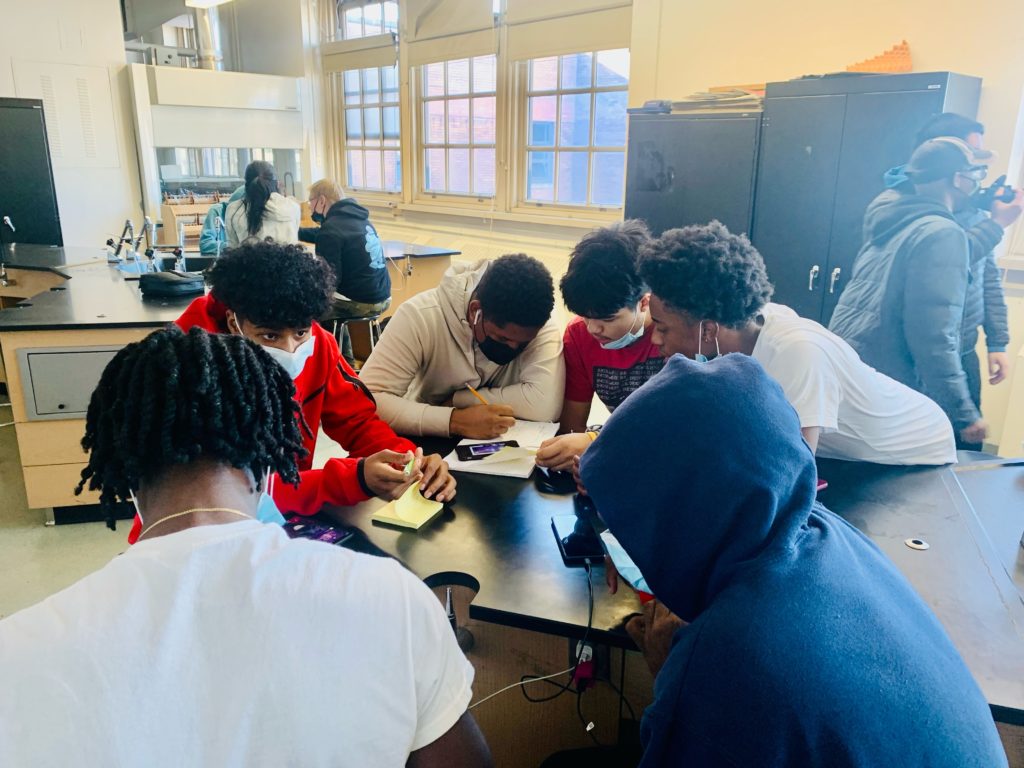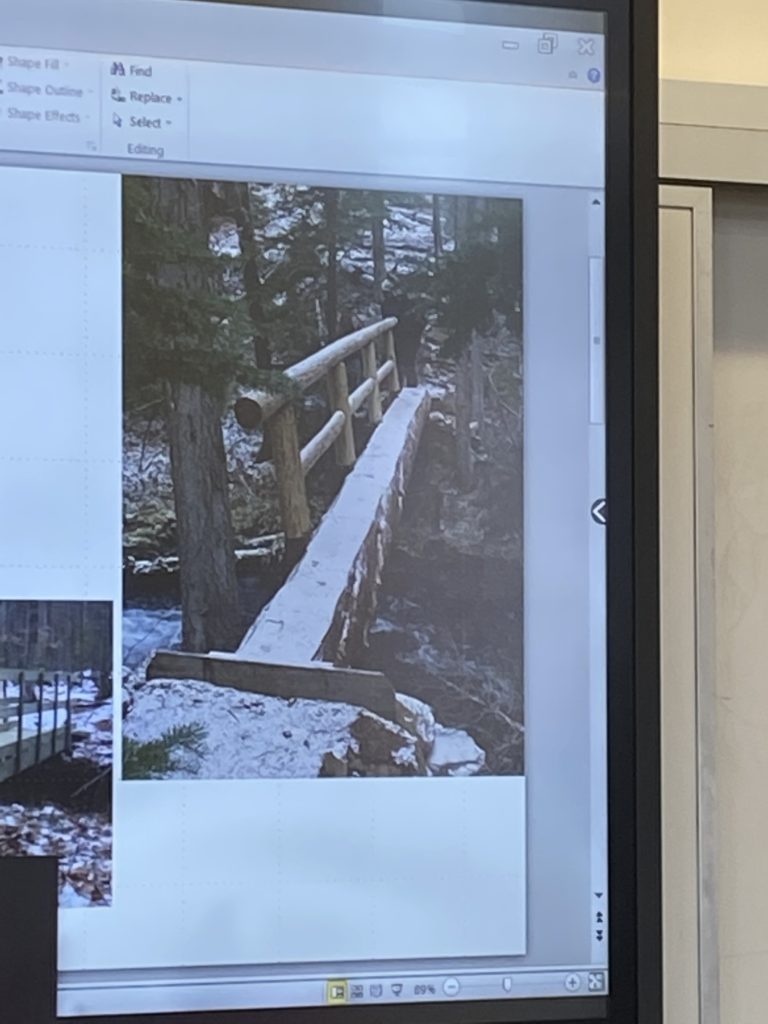
On November 10th, 2021 WHSAD students attended their third meeting with the staff at High Rock, a team that focuses on the Greenbelt Park in Staten Island. Over the course of the meeting, speaker Josh Otero explained what the Natural Areas Conservatory (NAC) is and how the organization benefits the park. He explained NAC started in 2017 and has been a non-profit working on park trails and their restoration. They have helped restore 300 miles in 75 official and unofficial parks as well as 19 park trails, covering over 40 miles.
Mr. Otero also went over trail sustainability and trail formalization and the impact these factors have on a park. Trail sustainability focuses on durable yet discreet and fitting trails. This helps trails to blend in with their surroundings and cause minimal issues with the surrounding natural environment/ecosystems. This is also positively affected when people take the initiative to keep the trails clean and taken care of them. It will help make the trails last longer and will cause even less disturbance to the surrounding area/environment. However, trail sustainability relies heavily on the surrounding environment and has to be specifically planned out and tailored for specific areas/projects.
Trail formalization works hand in hand with trail sustainability as it focuses on the data aspect of creating trails. Park managers figure out where they would like to place trails, and then they focus on needed measurements and possible obstacles. Such obstacles and important measurements can include and focus on surface type, erosion concerns, trail width and various other problems that may be job specific. They use specific tools such as stake wire flags, and flagging tape to assist them with this process. They also use specific measurements and safety gear while working. After measuring the allotted trails and they are created, workers then get to create an official trail map for the park.
In the following narratives, some of my peers share their insights regarding session three.
We met with the High Rock team, MSK, and MBK members for a third time this school year on Wednesday, the 9th of November. Josh Otero and Christopher Ricker spoke about bridges and the many routes found in parks and woods. Natural Areas Conservancy’s Josh talked to us about park restoration and management in New York City. Hiking, mountain biking, ATVing, interpretation and education, cross-country skiing, and equestrianism appear to be the forms of route usage. According to the National Park Service, a sustainable route supports current and future use while having little impact on the region’s natural system due to the Greenbelt’s representative’s goal to keep the park’s natural and traditional form. They must utilize trails that do not harm the ecosystem or the land. Trail designs must usually be site-specific, which means they must meet the soil type, terrain contours, and available materials. Also, connecting with the last sessions goes along and connects with the different models of water management we created.
Following that, we learned more about the many kinds of bridges. Because they come in various forms and sizes, some may appear to be planks, others to be spiral steps, and yet others to be regular bridges. Most of the time, sills, stringers, decking, and even railings are employed to keep the bridges in place. Stringers and sills are frequently used to secure a bridge and keep it from sliding or collapsing. The representative might install more rails to prevent individuals from falling off, which provides a safer environment. We were then given an evaluation that required us to answer questions regarding the bridges they showed us. Each group was assigned a different bridge to cross.
My group, Group 3, was designing a timber truss bridge for the park. During the presentation, I believed this was the safest and most excellent bridge we could create, as the other bridges just had one rail and appeared to be dangerous to cross. We had to research different bridges and write about their effects on the ecology and wildlife in the vicinity and their durability, upkeep, and cost. The topic that sparked my interest was concerning its consequences on the ecosystem and other animals. Because of its size and the materials it’s constructed of, I predicted it wouldn’t have much of an impact. However, this does not appear to be the case because it will result in extensive environmental changes and significant mobilization effects. The bridge will require upkeep to ensure that it is maintained clean and that no trash accumulates on the plank, but other than that, the bridge seems to fit well with the image’s style.
-Kevin Garcia, Junior
High Rock session 3 was great as always. This session dove deeper into trail work and management as well as focused on many safety and work aspects of trail work including different tools needed for different jobs and the corresponding safety equipment needed to do them. We also had a special guest on for the session, and after lunch transitioned to focusing mostly on bridge designs and their different use cases.
Our special guest for High Rock session 3 was Josh Otero, Trails Community Engagement Coordinator of the Natural Areas Conservancy (NAC). The NAC is a non-profit program that partnered with NYC Parks back in 2012 and has since been able to manage and restore 10,000 acres of forests and wetlands across New York. Since 2017, the NAC has had the goal of formalizing all trails in NYC parks to create one connected trail system. So far, the NAC has formalized 40 miles of trails in 19 parks across NYC. This pales in comparison to the total 300 miles of official and unofficial trials in over 75 parks, but one step at a time and patience is sometimes all it takes.
Josh’s main focus for coming was to discuss the topic of sustainable trail design. Sustainability has moved into almost all aspects of design and this is no different from trails. In the presentation, Josh stated exactly what sustainable trail design actually was. He stated “The National Park Service ( Rocky Mountain Region January 1991 ) definition of a sustainable trail is:
• Supports current and future use with minimal impact to the area’s natural systems.
• Produces negligible soil loss or movement while allowing vegetation to inhabit the area.
• Recognizes that pruning or removal of certain plants may be necessary for proper trail construction and maintenance.
• Does not adversely affect the area’s wildlife.
• Accommodates existing use while allowing only appropriate future use.
• Requires little rerouting and minimal trail maintenance.”
Josh also went over how sustainable trails are meant to function and what their purpose is. He stated that sustainable trails should work with and around the environment instead of cutting through the ecosystem and affecting wildlife in a negative way. He also stated “In the case of New York City, historical use of a trail is also integrated into what ultimately is incorporated into trail management decisions.” This plays directly into sustainable bridge design which is what we discussed for the second part of the session.
Chris Ricker took over for the second part of the session to talk about sustainable bridge design and how different bridges affect the environment. He talked about how locally sourced materials such as wood and rocks were in most cases the best options for creating bridges due to their low costs and minimal effect on the environment. Bridges that were locally sourced might include designs where the bridge itself is based around a large log put in place and guard rails built around it. This is better than using external materials because you don’t always know how it might affect the local environment. One example is using treated wood to build the bridges. Chris stated that it is very easy to go to Home Depot and buy decking planks and build bridges out of those materials. The downside is that the chemicals used in treating the wood would negatively impact local wildlife around the bridge and cause problems later down the line. We want to stay away from those situations as much as possible and use materials that don’t affect the environment negatively.
For the last part of the session we were tasked to participate in an assignment. All the participants created groups and each group was shown a picture of a bridge. We needed to determine whether the bridge was sustainable in design and whether it would impact the local environment and in what way, as well as determining to our best judgment if the bridge was built using locally sourced materials.
Overall, it was another amazing session. I thought it was very cool learning about what exactly is sustainable design and how it applies to trail construction. I enjoyed learning about the NAC since I had never heard of them before and meeting Josh who led the sustainable trails part of the presentation. I thought it was interesting to see what their goals were and what they did as an organization. I had a great time and I can’t wait for the next one.
-Matthew Zaczeniuk, Junior
On Wednesday we met with High Rock for a third session in the lab on the fifth floor. We discussed more about bridges and the different types of paths that are in parks and forests. Josh from Natural Areas Conservancy (NAC) informed us about the restoration and management of parks in NYC. Apparently, the types of trail use are hiking, mountain biking, ATV, interpretation and education, cross country skiing, and equestrian. The National Park Service’s definition of a sustainable trail is support of current and future use with minimal impact to the area’s natural system. To them it’s important to use trails that don’t damage the environment and the soil. Usually, the trail designs have to be site specific, which means that it must match the soil type, contours of land, and the available materials. We learned that the different types of trails are check steps, which look like steps, water bars, puncheon, and turnpike. Materials for these trails were often priced at $276.71.

After that we learned more about the different types of bridges. There’s so many different shapes and sizes so some can look like planks, others like spiral stairs, and others like normal bridges. To hold the bridges most of the time sills, stringers, decking, and even railings are used. The stringers and the sills are often used to place a bridge and prevent it from moving or falling. The railings could be used more to prevent people from falling down and to create a more safe spot. The assessment that we got afterwards was to answer questions about the bridges that they showed us. Each group got assigned a different bridge. I was in group 2 and we got the bridge with the thin plank and one railing on the left side. I thought that it looked a bit thin and unsafe to use because of the one railing it had. We had to analyze the bridge and write about what we think that the impacts of species would be along with mobilization impacts, maintenance needs, and the aesthetics. I wrote that it wouldn’t cause much of an impact because of its size and the materials that it’s made of. But apparently this is wrong because it will actually cause big changes to the surroundings along with great mobilization impacts. The bridge will actually need maintenance so that it’s kept clean and no garbage gets on the plank, but other than that the bridge actually seemed to fit perfectly into the aesthetic in the image.
-Magaly Aspiroz, Senior
This week’s Greenbelt session was a more informative one than previously. Us participants were introduced to the Natural Areas Conservancy (NAC), a non-profit partner. NAC representative, Josh Otero, went through a summarization of the company, informing us that the company has been assisting with the management and restoration of 10,000 acres of forests and wetlands since its founding in 2012. The NAC has been partners with NYC Parks since 2017, aiding in formalizing natural trail systems citywide. So far, Parks and NAC have formalized over 40 miles of trails in 19 parks across New York City, with another 300 miles of official and unofficial trails in over 75 other parks.These trails include:
- Hiking trails
- Mountain bike trails
- ATV trails
- Trails for interpretation & education
- Cross Country Ski trails
- & Equestrian trails (Horse trails)
Mr. Otero also went through a brief history of New York trails, the thought process to design and sustain trails, the planning process, and tools used for planning and constructing trails. Path accommodations were also displayed in the later half of the session, including check steps, water bars, puncheon and turnpike paths. The prices for each were also shown. Towards the end of Mr. Otero’s presentation, he displayed research findings conducted by the NAC’s inspection of some of NYC’s parks. Major findings included unorganized management in several parks, levels of trail terrains, and the parks with the largest trail systems across the 5 boroughs.
On his final slide, Mr. Otero told us the goals of the NAC:
- Create a trail system that provides diverse experiences to showcase the natural diversity of NYC Parkland.
- Support the adoption of every nature trail in the city by an ambassador or recognized stewardship group.
- Use signage, maps, and wayfinding in parks and online to make parks accessible to a range of park visitors.
- Adopt consistent approaches to design, construction, and maintenance of nature trails.
- Offer weekly programming opportunities in every park to engage members of the community.
- Secure a diverse and stable set of funding streams to fully fund and support the trail management program.
In short, the Natural Areas Conservancy strives to make New York parks inclusive, and design paths in a way that anyone can access.
-Ethanael Vega, Senior


